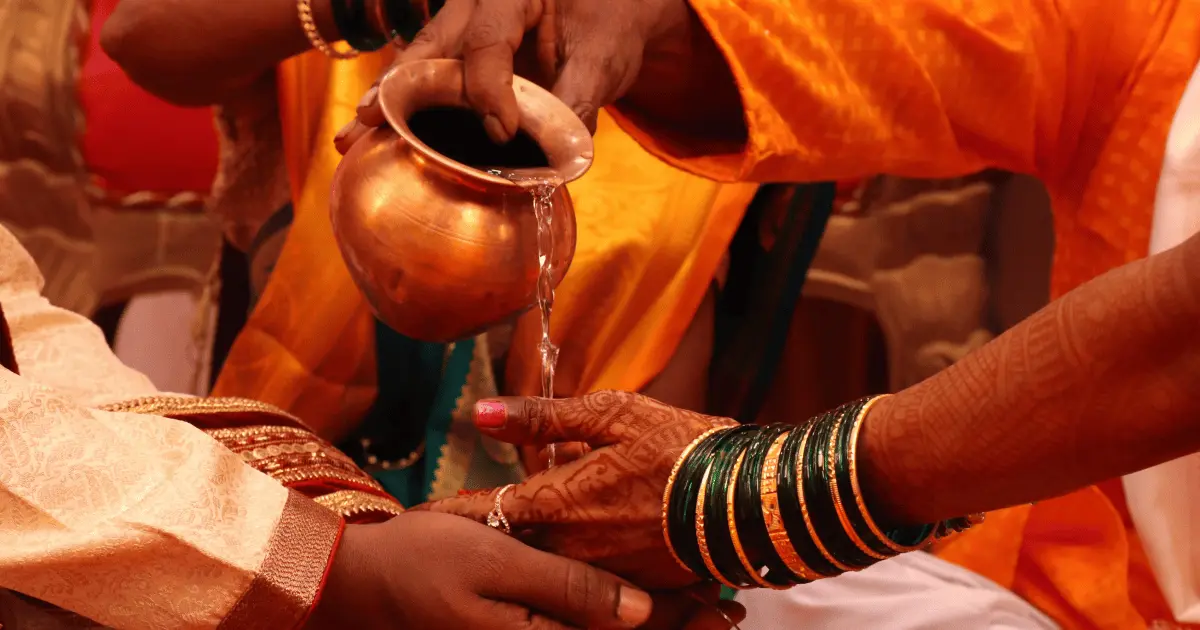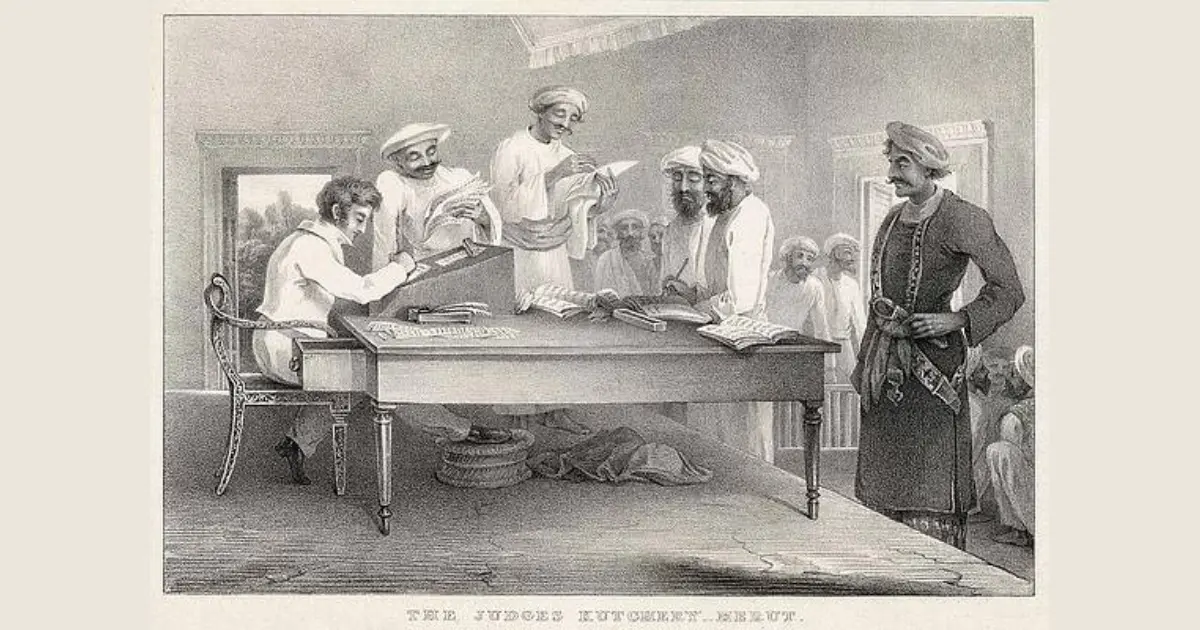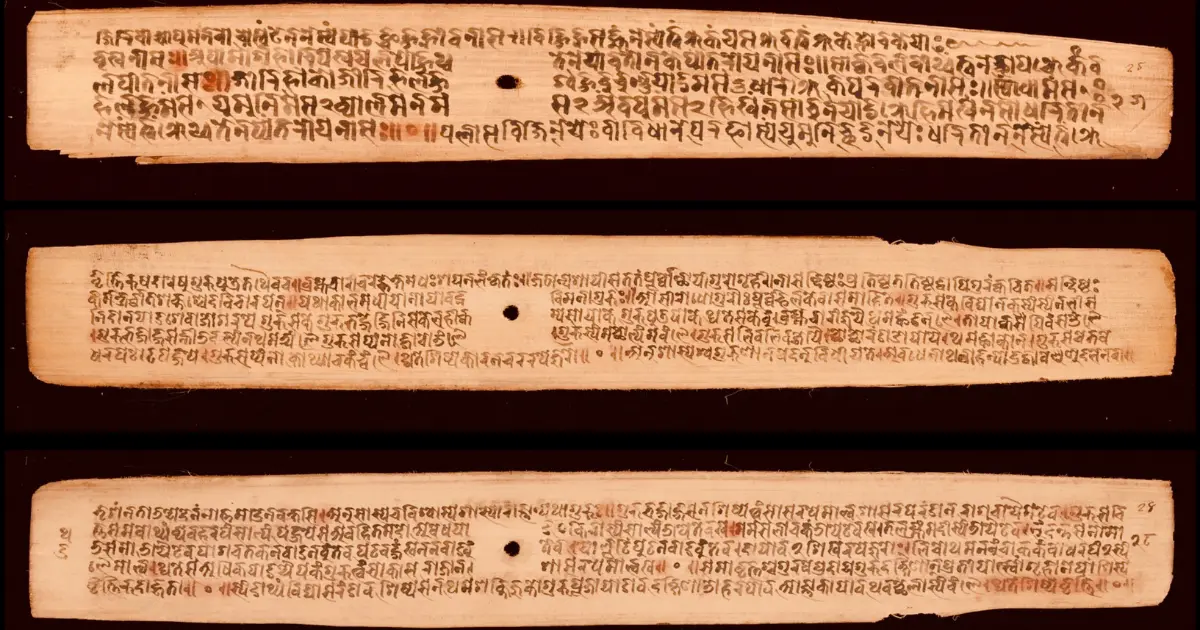The recent hearings in the Supreme Court of India by a five-judge constitutional bench on same-sex marriage for LGBTQIA+ community have captured the attention of the nation. There are opinions, counter-opinions, and memes in social media and WhatsApp groups, op-eds in print media, debates and discussions in visual media and podcast channels, and casual chitchats and fierce disagreements at office spaces, hang-out joints and even tea stalls. This concerns scientists, activists, lawyers, students, religious figures, teachers, policymakers, philosophers, theists, atheists, parents, partners, and virtually everyone under the sun.
Why?
It is because the fundamental institution of society, marriage, has been put on the altar.
If a parochial view is taken and implemented, it might cause severe damage; history is testimony to such instances.
Before diving into the topic of same-sex marriage, let us take a step back and analyse the institution of marriage itself.
Theories of Marriage: Western Sociology
Western sociology has adequate literature on the institution of marriage and family. The functionalists understand family as a building block of society with multiple utilities:
- Acculturate children to societal norms and values
- Serve as a stress buster to working men, historically speaking; by the postmodern age, to both men and women
- Offer emotional support and cohesion to individuals
- Provide social identity and status
- Bolster economic support, and so on.
They also perceive that marriage as an institution helps regulate the sexual urge of individuals, and thereby guides the building of a harmonious society.
Those of the Marxist school, like Fredrich Engels, write off family as an exploitative system, where there is a discriminatory division of labour against women. The domestic labour of the wife is not paid for in a capitalistic system. This in turn benefits the capitalists or the business class.
The feminist school, and the multiple waves of feminism that have rippled across the decades, critique families for controlling and subjugating the female body and sexuality by imposing social values and power equations. They advocate for the annihilation of the family as a radical change.
There are also structural definitions of different categories of family and household, such as:
- Nuclear family
- Joint family
- Separated family (parents unofficially or legally divorced, splitting and/or sharing custody of children)
- Single-parent family (single-mother, single-father, single-grandparent households etc)
There have been numerous appreciations, reviews, and critiques of the specifics of each school, thinker, and work. So, here I do not merit any specific analysis or champion any one of them against the other, as it serves no further purpose. However, what is important is to look at the commonalities of these distinct understandings of marriage.
The single point of commonality in all these Western articulations is the lack of a holistic or integral understanding. They do not integrate all aspects of worldview, from biology to psychology to sociology to spirituality.
Neither do they accommodate both the individual and collective objective; they are not inclusive of the units of expression at micro- and macro- levels.
Nor does any Western understanding of marriage fit into a consolidated metaphysical outlook. These schools of thought do not even begin to consider the subtler realities of matter, intelligence and consciousness. They fall flat when it comes to providing an overview of the physical and the cosmic; and they do not provide a foundational perspective which can be integrated with different planes of existence, over various scales of time and space.
Let us examine what the institution of marriage is, thoroughly - with a holistic, comprehensive, and integral view.
Marriage is a Yajña
Marriage is an institution of sacrifice. This sacrifice is not in terms of a narrow, altruistic sense, but in terms of the original Vedic Sacrificial Fire, as described in the first hymn of the Rig Veda, the extant work from human antiquity. Marriage is yajña.
What is a yajña? Sri Aurobindo sees the Vedic age as a symbolic age where the material actions and things are outer manifestations of the cosmic spirit and its working.
The material planes of rituals, natural phenomena and material resources venerated in the form of deities and artifacts have deeper psychological and spiritual truths, whether seen from the inner spirit of existence or wider cosmic realms - both consistent with each other. These symbolisms are not meant to negate the material world and its processes; rather they are a pathway to thoroughly understand the working spirit and then to transcend it.
Sri Aurobindo gives us an insight into what is yajña, where it is not restricted to the physical sacrificial altar. Yajña is a pathway to the Absolute Cosmic Consciousness that pervades the world. The Infinite Absolute manifests itself through yajña. Through yajña, we understand the ultimate reality.
The yajña or sacrifice here is the involution of the Absolute from the singularity to multiplicity. Involution is the descending process by which the cosmic consciousness binds itself in matter. For the counterpart, it urges the evolution from multiplicity to singularity. Evolution is the urge of the cosmic spirit, that has apparently become multiple and fragmented, to attain its source-singularity. This is the grand order in the chaos of the entire cosmos: involution and evolution. This is the law and rhythm of sacrifice for all beings, for existence itself. Just as in macrocosm, so in microcosm. This force or law plays its part like a fractal mandala in each unit of manifestation.
Marriage is the basic unit of society. This basic unit is a purposeful, intentional, conscious cultural institution and thus a yajña. Let us examine how the sacrificial altar is lit in this institution, to maintain the yajña of involution and evolution.
First, two individuals of opposite genders bond biologically and emotionally. With this bonding, emotions and resources are interchanged, whereby their subtler energies and even electromagnetic fields interact to get integrated with one another.
Then, offspring are created. The offspring(s) so reproduced have a certain degree of resonance to the parents. Biology explains these in terms of quantifiable parameters like inherited genes, traits etc. The offspring reproduced have local identifiers in terms of physical features, emotional traits, and intelligence.
Local here refers to association with parents or a wider group of ancestors. As a general rule, local can be said to be definable. Local features are shaped and unfold by factors of an individual’s environment - past or future.
The Absolute Consciousness is non-local and non-physical. This non-local Consciousness is manifested in local physicality and intelligence.
This is the process of involution, where singularity is multiplied and where infinite becomes finite.
A yajña is done. A sacrifice is offered.
The process of involution is preceded by a process of evolution in the family. Through the yajña of marriage as a sacred institution, two individuals coming together for this co-creative process transcend their individuality, their physical and emotional identities.
One evolves from the limited individual sense of self to incorporate, integrate, and co-bear his/her partner self which has its own distinct and unique limited sense of self. Both individuals grow and mature through this process, dissolving their initial limited sense of identity, developing and expanding to accommodate another being. This is the first step.
Then, these two individuals evolve by bringing into the world their offspring. They offer their limited identities to expand, each in varying degrees if not fully.
A two way process occurs where biological, emotional, psychological and social desires are fulfilled alongside a pertinent sacrifice of narrowness of identities and one's lower nature or animal instincts. This is a transaction, an evolution, in accordance with nature's rule and rhythm - A yajña.
Marriage as enabler of Yoga of Action
This is only a limited and single illustration of the institution of marriage for easy comprehension. The ways of nature are myriad, so as that of the culture built upon it. The institution of marriage is the first unit where the baton of evolution passes from biological nature to culture. The evolution which was from physical to chemical matter, from unicellular biological organisms and then leading to multicellular, has now entered the realms of culture.
All processes of evolution ought to be expansion of consciousness. Processes that are self-limiting or non-reciprocatory are to be avoided, as they do not offer sacrifice and therefore no transaction. This distorts the rhythm of nature. As per the laws of nature, what is not offered back is eventually snatched away.
Thus actions that are performed purely for personal enjoyment and hedonistic pleasures remain outside the scope of marriage. Whereas, actions that offer sacrifice in exchange for fulfilment of desires and needs are within the order of this institution. The latter leads to what is known as niṣkāma karma (detached action), where the cause of action is not limited to human desires but encompasses non-local Consciousness or the cosmic rhythms of nature. The former prevents one from engaging in selfless action which further refracts us away from non-local Consciousness. The latter is evolutionary, where there is mutual give and take, while the former is not.
The fundamental idea here is that the life of any individual is not isolated, rather intertwined at all realms, from the local to the cosmic. Through physical, psychological, internal or external means - the idea of yajña helps transcend insecurity caused by self-limiting identity, and enables attainment of peace and fulfilment.
Marriage as an institution builds this culture of yajña through evolution of human actions. The sacrificial bond between siblings is the unit on which brotherhood is built. The self-sacrificing love of a mother towards a son and a father towards a daughter is unfathomable. Of course, there is fulfilment of desires but every fulfilment corresponds with sacrifice - a yajña. This builds actions of a higher order and creates a conscious cultural institution.
In the Indic system, the institution of marriage as yajña comprises voluntary offerings undertaken by the couple, and creation of ordered unique pathways for the evolution of one's consciousness. These unique pathways are rituals and roles.
Every person carries an agni or sacrificial fire within them that represents the conscious force driving all intellectual, emotional and physical action towards the sole goal of evolution. Therefore, each member of the family is an individual force in action who immolates themself in the sacrificial fire, in order for expansion of the individual and the collective.
Symbolically each member of the family is a purohita - the priest who performs yajña. He lights the fire in the outer altar that corresponds to the inner conscious force. The offering in sacrifices is meant for the agni to rise - the expansion of inner conscious force.
This, in a nutshell, is karma yoga, the yoga of action. Marriage and the family unit enable this as well.
The universal principle of Marriage
Family brings order to chaos. With the amount of information that our fragmented physical, emotional, and intellectual selves encounter, it is difficult to make sense of reality, leave alone long-term evolutionary goals. The family unit creates guided journeys for self-evolution while making space for fulfilment of our desires. It creates order in chaos. Thus, marriage is the bedrock of civilization, which is a much grander yajña - a much grander order in much grander chaos. Yet the operating principles are the same. The civilisation is built on the nature of being - involution and evolution. The fulfilment of desires is aligned to the nature of being.
This is the ideal vision of the institution of marriage based on cosmic principles or order, also known as ṛtam. With the corruption in understanding of the greater vision, the cosmic principles and order, and how the bedrock of marriage fits into those - the ordered paths for evolution have been abandoned amidst the chaos of the subconscious and unconscious. The individual is abandoned/bereft of a proper support system, and the collective also consequently suffers. Not only this, but that very support system called the family is then misunderstood, labelled, and falsely projected as that which is discriminatory, restrictive via 'role stereotypes', and exploitative.
Family as an institution is said to have relative moral values and roles as per different religious and moral dictats. Institutions and ideologies of society keep changing the nature and mandate of family from time to time. But if there is any universal character and role of the institution of marriage and family, it has to be seen in the rhythm of nature.
Religious codes or secular laws that enable this evolutionary character and expansionary roles are policies of the right kinds, otherwise they are corrupting and degenerating. Most religious and secular codifications came over time to make sense of the symbolic meanings encapsulated through various rituals and processes bringing together the institution of marriage in the Vedic age, or in so-called primitive people.
Nevertheless, we must keep in mind that it is only natural for the universal principle of marriage as an institution to manifest in diverse ways across distinct societies. To fixate on and demand uniformity across the vast manifestations of creation is also to fall into the trap of forcing one parochial worldview onto the varying cosmic diversity.
Contrast with rights-based order
This idea of marriage as a union, as yoga, or as a yajña is incompatible with a perpetual rights-based fundamentalist approach. It is necessary to understand the general prevailing conditions for the genesis of a rights-based system.
*A rights-based system develops in a space of contraction. Times of extreme subjugation and exploitation lead to contraction of individual consciousness and clinging to narrow ideas of physicality, emotional gratification and intellectually unsound models. It is therefore evident that the paradigm of rights-based discourse emerged in Europe post the Dark Ages. *
When a culture becomes corrupt, exploitative, and discriminative - the safeguarding of individual expression through a rights-based system should be the natural, consequent reaction. Rights-based order stabilises the chaos which stifles individual security and liberty.
Nevertheless, such a reactionary rights-based system should only be a tactical order for a limited period of time and space. Gradually, there should be a progressive return to the proper balance and integration of individual expression leading to collective harmony, which by definition entails mutual give-and-take sacrifice.
Moreover, the infinite objective should be expansion of individual consciousness, not constriction. When a rights-based framework is applied in the institution of family and marriage, this goal - maintaining order in chaos - should be kept in sight. The spirit of yajña must flourish - to nourish, rather than degenerate, the human spirit.
On the contrary, today's rights-based approach has become a self-perpetuating chaos with complete disregard to human integrality and evolution. Thus the institution of family finds itself at a dreary gunpoint. Marriage as a concept is at odds with socio-political narratives, agendas which are bent on perpetuating disunity and a total striping down of integrality.
In the Indian tradition, the role of the family has always been lokasaṃgraha or holding together of multiple beings. The holding together maintains order in chaos, thereby leading the great march of unity towards the Absolute Consciousness. This should be the ultimate goal of all human endeavour. This unity is not a mechanical, passive collectivism of individual humans but internal integrality of human nature to live in resonance with the cosmic rhythms.
The expansion of individuality should not be thought of as collective needs obliterating individual aspirations, or individual potential suffocating at the hands of the larger collective unit. It cannot be understood in the narrow sense of altruism.
It is rather a true fulfilment and satisfaction of the individual, and the widening of individual consciousness through the medium of a conscious cultural institution. It can lead to the desired expression of individuality, to emerge as ‘ṛtvijam’- one who is adept in nature’s order, or the knower of truth.
The principle of sacrifice is the primary notion -** where the widening of the individual consciousness through the medium of a cultural institution upholds and sustains the cosmic rhythm**. This foundational understanding shapes and defines the character of this institution of marriage, where rights and duties are then aligned accordingly.
Conclusion
The creation of the institution of marriage is not a product of ordinary human consciousness, namely shrunken minds and emotions. The purpose of this institution is lokasaṃgraha or holding together of the inner and outer worlds, which helps manifest the cosmic order - yajña, the process of involution and evolution.
Marriage as an enabler of yajña through karma-yoga becomes a pathway for the fulfilment of the individual's inner potential amidst collective harmony, and thus acts as a barrier to confusion and chaos.
Hence, marriage and family are not to be written off as altruistic social constructs. To perceive only their social utility is to remain bound to a narrow, limited vision of human civilizational at large.
Anything non-integral and non-transformative - like a rights-based view or limited moral and social altruism, which either brings collective downfall or ignores individual expansion, respectively - corrode the very foundation of marriage as an institution.
Please Note: Further articles in this series by the author will explore different aspects of marriage and also delve into perspectives on same-sex marriages.
References:
- Hymns to the Mystic Fire by Sri Aurobindo Hymns to the Mystic Fire - The Incarnate Word
- Essays on the Gita by Sri Aurobindo Essays on the Gita - The Incarnate Word






